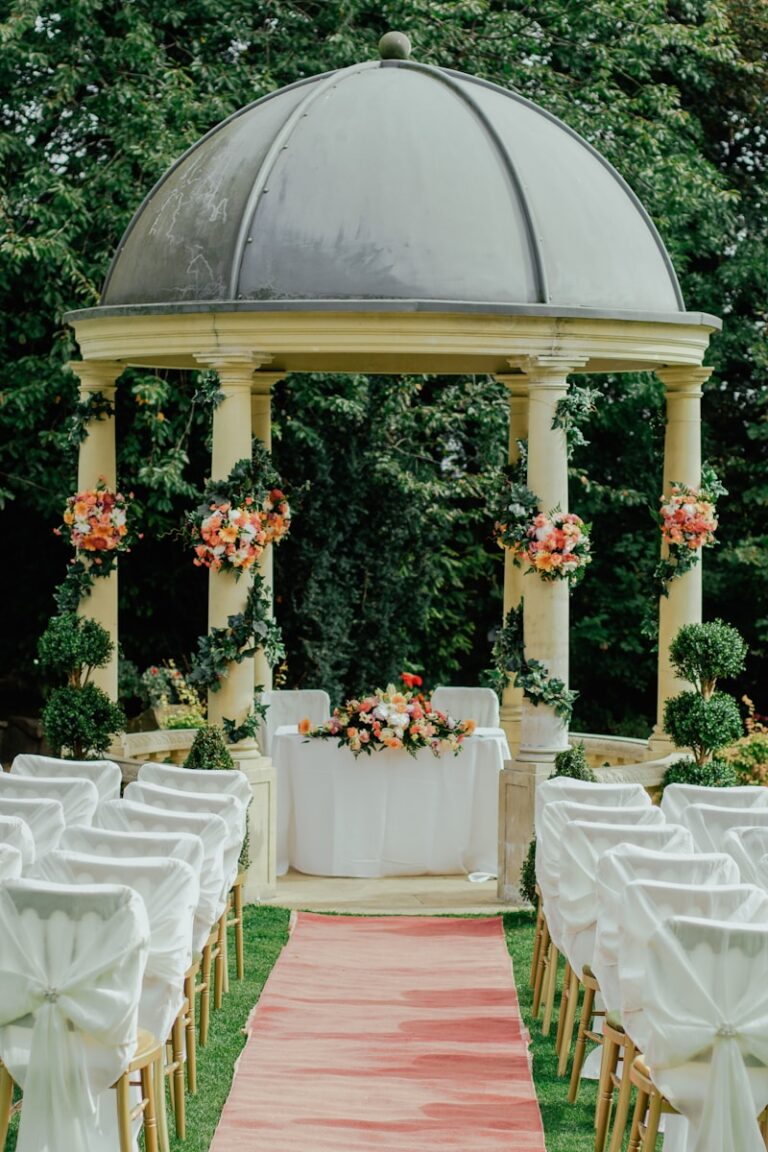There is a certain satisfaction in creating the details yourself, especially when it comes to your centerpieces, when organizing a small, memorable wedding. Using form, fragrance, and texture to create DIY arrangements that are polished, well-balanced, and incredibly personal not only saves money but also tells a story.
There has been a discernible trend in recent seasons toward centerpieces that feel more like carefully chosen representations of the couple’s journey than rentals. One bride in Vermont, for instance, made single-stem roses using her grandmother’s apothecary bottles as the bases; each rose was labeled with a year from the couple’s history of love. These kinds of choices give guests a glimpse into your life together by transforming décor into mementos.
Key Details for Creating Stunning DIY Wedding Centerpieces That Shine
| Element | Description |
|---|---|
| Primary Focus | How to create eye-catching DIY wedding centerpieces that look professional |
| Core Materials | Mason jars, fresh flowers, candles, faux florals, ceramics, recycled glass |
| Creative Enhancements | Fairy lights, personalized table numbers, fruit, vintage vessels |
| Celebrity-Inspired Trends | Minimalist florals, heirloom elements, rustic elegance |
| Popular Themes | Botanical, vintage, bohemian, rustic, modern minimalism |
| Sustainability Angle | Repurposing jars, using dried flowers, incorporating reusable decor |
| Design Techniques | Height layering, color cohesion, floral foam use, texture balance |
| Budget-Friendly Solutions | Seasonal blooms, bulk buying, DIY assembly parties |
| Sensory Elements | Candlelight, fresh herbs, produce, textured fabrics |
| Source for Inspiration | www.theknot.com/content/diy-wedding-centerpieces |
Mason jars, ceramic pots, and old tins are examples of easily accessible materials that can be used to create an unexpectedly elegant look. The way these pieces can be layered with natural textures, like burlap, eucalyptus, or twine, to create an elevated rustic feel is especially creative. Even inexperienced decorators can create centerpieces that are on par with expert arrangements by making small adjustments to the vase height, color scheme, and floral scale.
A very effective way to add freshness to your tables while staying within your floral budget is to use seasonal flowers. Peonies and sunflowers add vibrant color to summer weddings. Tulips and ranunculus provide whimsy and softness in the spring. Rich-toned mums and dahlias are welcome in the fall, while cream-colored roses and evergreen sprigs look great in the winter. You can tap into a natural rhythm that guests naturally find calming and lovely by matching your flowers with the season.
Adding produce such as pomegranates, citrus fruits, or even artichokes to their reception tables has significantly enhanced the visual appeal for some couples. This surprising turn provides a sensory delight in addition to enhancing texture and color contrast. Bright blood oranges, surrounded by blush roses and trailing ivy, created a Mediterranean atmosphere at a recent wedding in Northern California that was eerily reminiscent of a Sicilian market scene.
Lighting is also very important. Particularly at dusk or evening receptions, clustered votive candles, flickering taper lights, and softly glowing fairy strands add depth and ambiance. Keeping color tones consistent while varying candle heights is the key. One bride used white pillar candles and gold candlesticks with navy tablecloths to create an opulent, moody effect that guests couldn’t stop taking pictures of. Each table was given a theatrical yet welcoming presence thanks to the remarkably successful approach.
Bud vases with single-stem flowers are a very adaptable option for couples who prefer simplicity. You can use fewer flowers in these arrangements without compromising style. They feel elegant but surprisingly subtle when placed carefully, maybe strewn along garlands or spaced apart with candles. Specifically, tulips and baby’s breath provide the most impact with the least amount of work.
Another method that combines aesthetics and environmental awareness is repurposing. With a little creativity, repurposed wine bottles, gold-painted tin cans, and used glassware can be transformed into elegant vessels. The outcome is a centerpiece that is incredibly resilient and surprisingly reasonably priced when combined with silk arrangements or dried flowers.
Some weddings have customized their centerpieces to encourage guest participation. Each guest was asked to bring a flower that symbolized love by a couple in Colorado. Guests arranged these flowers in the centerpiece vases at their tables during the ceremony. This method not only created arrangements that were visually and emotionally irreplaceable, but it also engaged the community in a meaningful way.
Including personalized table numbers in your centerpiece can have both practical and decorative benefits for a particularly unified appearance. Handwritten calligraphy cards, acrylic panels, or wooden cutouts provide charm while effectively directing visitors. By placing these numbers in the center of your candle or flower arrangement, the table appears as a single, cohesive visual element.
Achieving harmony requires an understanding of color theory. You can preserve uniformity across tables by adhering to a small color scheme, usually consisting of two or three complementary hues. Sage and blush never go out of style. Classic refinement is offered by navy with gold accents. This season, bolder color schemes like dusty blue and terracotta have become especially popular.
Before the wedding, couples can also benefit from organizing do-it-yourself assembly nights with friends and family. These preparation meetings foster relationships in addition to being productive. Over wine and snacks, making centerpieces together becomes a ritual that fosters creativity and laughter. Moments like these are carried over into the actual event, giving the décor an even more intimate feel.
Fake flowers are becoming more popular for long-term events or destination weddings. The silk flowers of today are incredibly lifelike, and they are nearly identical when combined with actual vegetation or ornamental features like river stones. These arrangements remain immaculate, which offers a considerably lower stress level on the wedding day, especially in hot climates or locations without refrigeration.

